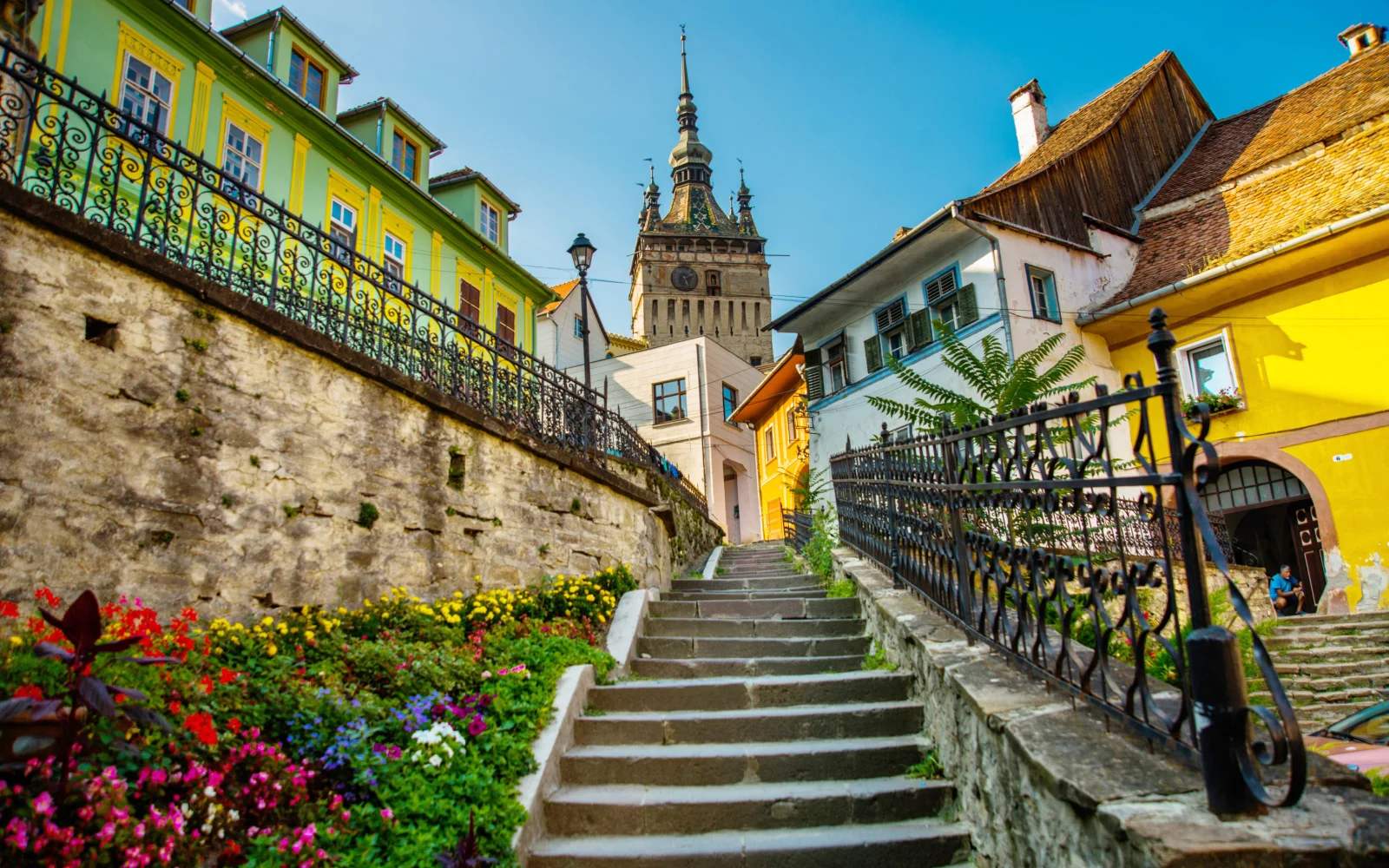What's the best time to visit Romania?
The best time to visit Romania is during the summer months of June to August, offering pleasant temperatures between 83°F and 57°F, ideal for outdoor activities and exploring historic sites.
Summer brings lively festivals like the Traditional Crafts Fair and the Maidens’ Fair, alongside a bounty of fresh fruits and vegetables. However, visitors should expect larger crowds, higher accommodation prices, so be sure to book early.
With a mix of varied history, breathtaking nature, and castles straight out of a fairy tale, Romania is surely an underrated tourist destination. To get the most out of your trip, however, it’s wise to get insights into the pros and cons of going at different periods of the year.
Considering things such as budget, low season, high season, and activities and events during the year are all factors that can either make or break your journey. It all depends on your preferences.
So whether you wish to know the busiest month in Romania or simply when to avoid heading there, follow along as we explore all this in greater detail and so much more. Let us be your guide!
The Overall Best Time to Visit Romania
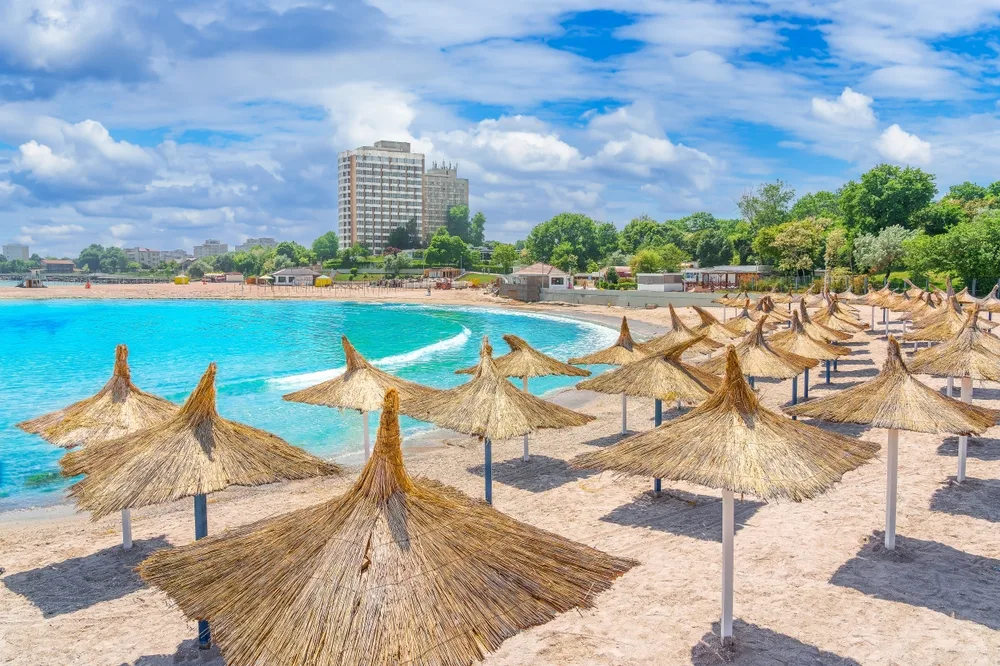
Serenity-H/Shutterstock
The best time to visit Romania is in summer, during the June–August period. The temperatures vary between highs of 83°F and lows of 57°F.
The weather’s perfect for visiting castles and churches, as well as taking part in other outdoor activities. Romanian summers are hot, but that’s when the entire country comes alive.
Note that these months see large crowds, high accommodation prices, and heavier road traffic than usual. On the bright side, daylight hours are much longer, allowing travelers ample time to enjoy the country’s landmarks and nature.
Summer also arrives with a plethora of fresh vegetables and fruits for both locals and visitors to enjoy. It’s also a lively festival period, with a wide range of events scattered around the country.
In June, the Traditional Crafts Fair takes place in Bucharest, drawing in artisans at the Village Museum.
July has the Maidens’ Fair, an old festival known for villagers dressed in traditional costumes — head to Gaina Mountain Plateau for dances, music, and even finding a partner.
Then there’s the Sighisoara Festival of Medieval Arts and Crafts, honoring crafts, music, and of course, the medieval arts. In August, you can enjoy the Sibiu Traditional Crafts Fair, featuring woodcarving, pottery, and textile embroidering, to name a few.
Dance at Prislop is worth a bookmark in your calendar — a traditional festivity, the event features villagers parading in traditional costumes all the way to Prislop Pass.
Cheapest Time to Visit Romania
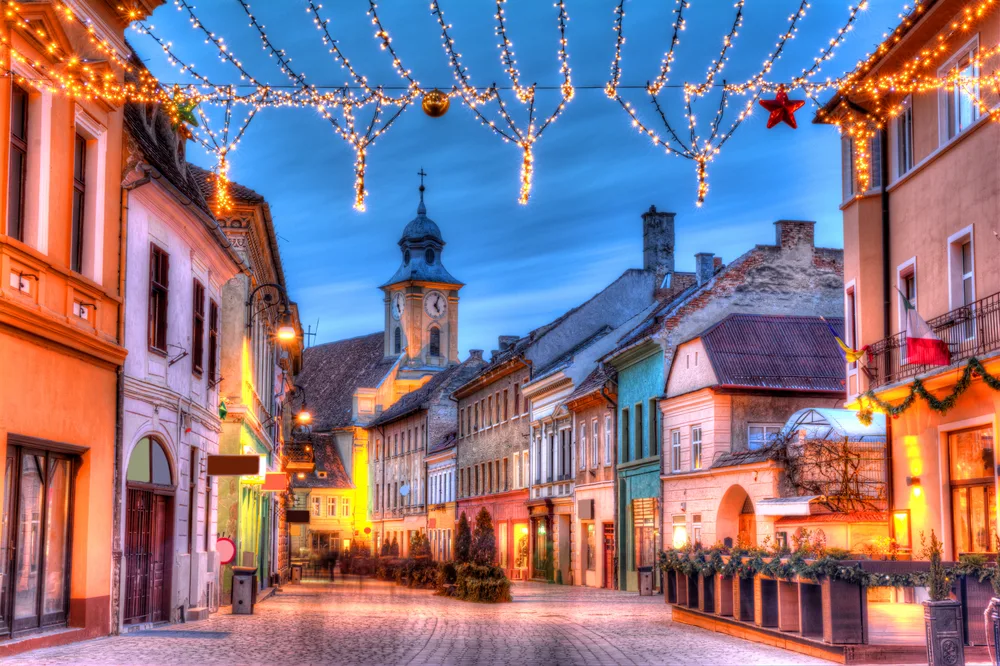
Christian M Balate/Shutterstock
The cheapest time to visit Romania is in mid-January. Budget-minded folks can take advantage of cheaper flights and versatile accommodation rates.
Being a cold winter month, January sees temperatures between 34.7°F and 22.1°F. The country is quite grim at this time, but the month kicks off with Bucharest’s Festival of Urban Culture, followed by Agnita’s Run of the Lole Festival, making the atmosphere more playful.
Romania’s Unification Day is also a big event honoring the unification of Romanian Principalities. Also, if you’re looking for a low-cost ski getaway, heading to Romania at this time should do the trick.
If skiing isn’t your thing, but you wish to enjoy Romania’s winter idyll, opt for the traditional sleigh riding between Transylvanian villages — keep your eyes peeled for potential tracks of the above-mentioned animals.
Least Busy Time to Visit Romania
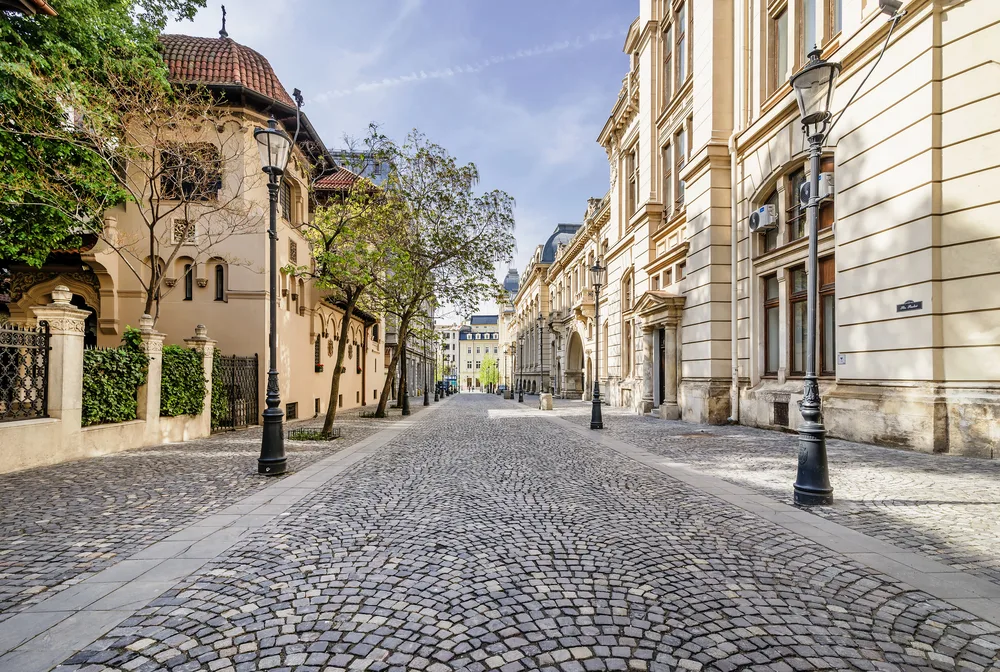
Marco Taliani de marchio/Shutterstock
The least busy time to head to Romania is either in April or May and September or October. The shoulder months in spring allow visitors to enjoy the awakening of nature.
On the other hand, the fall shoulder months are the perfect limbo period after the summer craze and the yet-to-start winter season, enabling travelers to take advantage of the still relatively mild temperatures and marvel at the autumnal harvest colors.
Moreover, the harvest season allows travelers to take advantage of tasty and, more importantly, fresh produce. Occasional rainfall is possible, though.
In smaller cities, public transportation may be reduced in the low season months. May hosts the Sâmbra Oilor, honoring the sheep herds’ departure in the pastures.
Romania’s best wine event, Revino Wine Show, is a great chance to try some local wines and simply enjoy your glass discoveries. In September, there’s Răvășitul Oilor, celebrating the herds’ return from the pastures.
The George Enescu Classical Music Festival is all about classical music and breathtaking performances in Bucharest.
October visitors can attend the Revino Gourmet Show and enjoy some of the country’s finest cheeses, wines, and cured meat. Of course, Halloween parties and festivities can’t go unnoticed, honoring Count Dracula.
April and May have temperatures fluctuating between highs of 73.9°F and lows of 42.1°F. Being comfortable fall months, September and October see temperatures between 42.3°F and 76.3°F.
Worst Time to Visit Romania
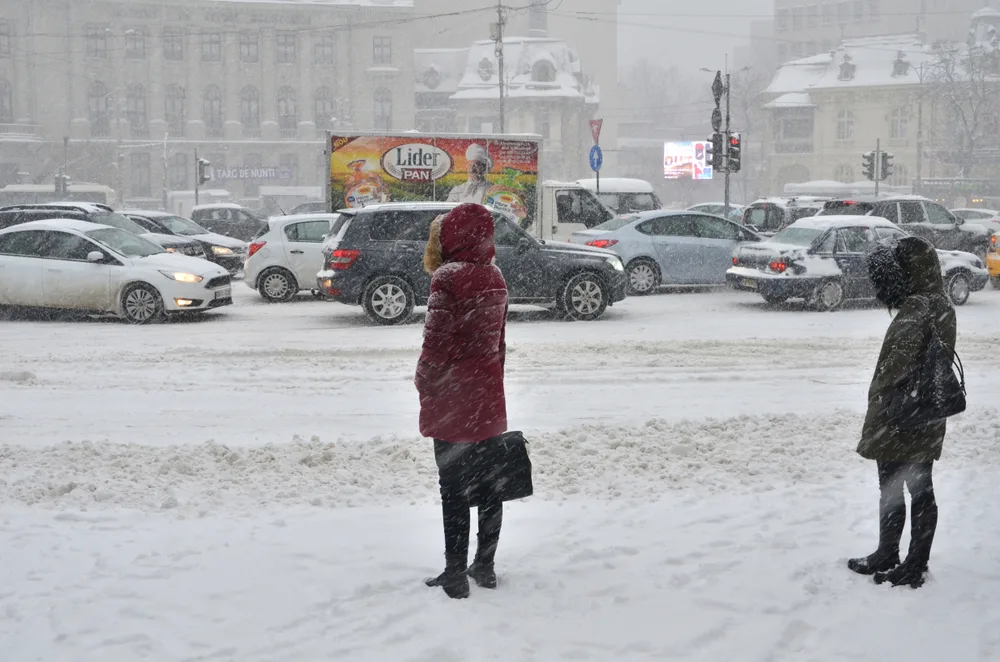
Bucharest, Romania – March 23, 2018: People are waiting for trolley bus during heavy snowfall. Unusual harsh winter weather conditions at the beginning of springtime/Vlad Vahnovan/Shutterstock
The worst time to go to Romania is in winter (December–March). Low temperatures make many activities challenging, and ice and snowy roads make travel difficult.
As the weather can cause travel disruptions, you may be required to be flexible with your schedule. Also, expect certain trails and attractions to close down or be difficult to access due to the harsh conditions.
That said, going to Romania in winter provides you with white landscapes you can’t see in any other season. From frozen lakes to snow-capped peaks, Romania gets picturesque beyond recognition.
The ski season slowly picks up in December, depending on the snowfall conditions, with Poiana Brasov being one of the preferred Romanian ski resorts.
December also hosts a plethora of Christmas markets in most cities. Then, there’s the Iași Festival of Winter Traditions, Brasov Winter Festival, and Timișoara Festival of Lights, both adding holiday magic to an otherwise slow-paced and cold period.
If you wish to take things slowly, February is ideal for indoor activities such as touring landmarks, heading to museums, and dining at some of the best local-approved restaurants.
To spice up your winter itinerary, consider attending some of the following February events: Prejmer Pancake Festival, Iasi Exotic Plants Show, Classix – Iasi Classical Music Festival, Brasov Festival of Spring Jewelry and Ornaments (yep, it’s in February).
March gives visitors winter’s cold climate with glimmers of spring.
Festivals worth being on your cultural radar include the Romanian Pop Music Festival, Massif – Poiana Brasov ski slopes – Music Festival, and Jazz in the Tram, where you get to listen to live jazz music while being on the Timisoara Sightseeing Tram.
If you go at the beginning of March, make sure to follow the Martisor tradition, including red and white cords to mark the start of the spring season (fun fact: Mărțișor is a diminutive form of March).
The December–February period sees average temperatures between highs of 39.4°F and lows of 26.1°F. In March, temperatures slowly increase with daily highs of 50.9°F and evening lows of 32.5°F.
This may be the worst time to visit Romania, but to us, it doesn’t sound bad at all!
Things to Consider
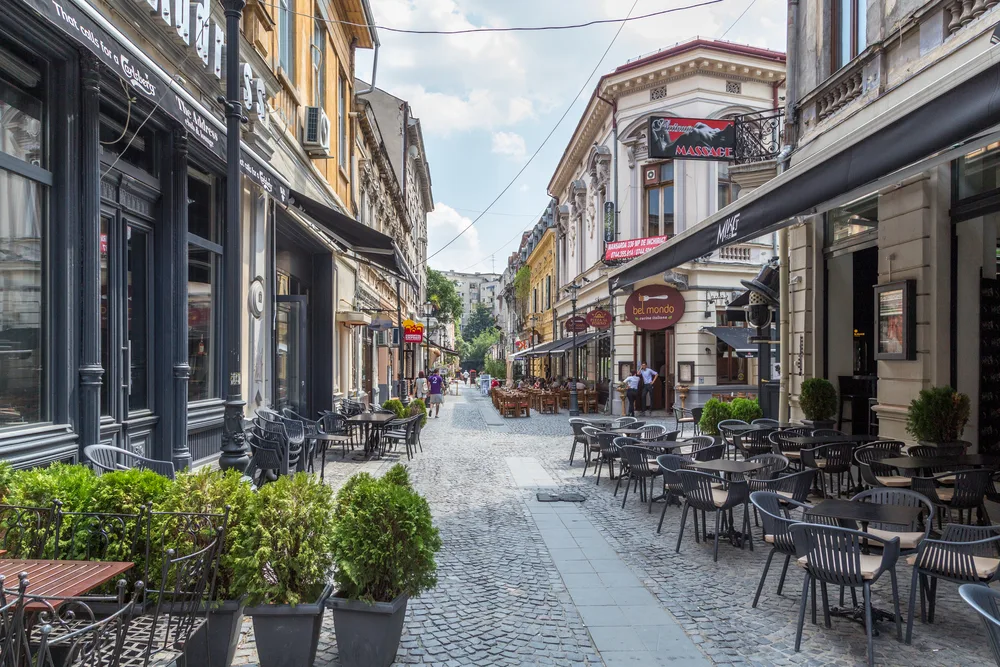
Bucharest, Romania – August 10, 2014: Tourist visit the capital city of Romania on 10th of August 2014 in Bucharest/Bilciu/Shutterstock
Besides knowing the best time to visit Romania, here’s what else you need to learn to ensure you have a hassle-free stay:
- While Romania shares both sea and land borders with Ukraine, the situation for the time being remains normal. That said, it’s advisable not to enter Romania via Ukraine.
- While most visits are trouble-free, always exercise common sense as you would anywhere in the world. The risk of petty theft is present everywhere. Bag snatching and pickpocketing may occur in bigger cities such as Bucharest, especially on public transport or in other crowded areas such as railway stations.
- Certain medical facilities may provide substandard care, especially in more remote areas, which is why getting suitable travel insurance and checking if it covers everything you need is a must.
- Make sure to store your valuables in a safe place. Carry a copy of your passport at all times. Avoid walking alone, especially at night. Never leave your drinks unattended in bars or clubs.
- Bucharest has a solid metro system. Other cities are serviced by other public transportation options, such as trams and buses. The country has a nice network of inter-city trains as well.
- Common scams include fraudsters introducing themselves as police officers and asking to see your ID. If you’re not sure whether you’re approached by an authentic police officer, ask to see their identification just to be on the safe side. ATM scams are common, so opt only for reliable ones.
- Driving conditions may be poor, especially in more remote areas. Also, driving laws are strictly followed, and there are regular police patrols conducting checkups.
- It’s not unheard of taxi drivers to try to overcharge foreigners — usually, taxis should display their prices on one side of the vehicle together with their company’s name, so make sure to check these things before you begin your ride.
- Changing money on the street is considered illegal — you should do so only in recognized exchange offices, hotels, or banks.
- In regards to LGBT activities, Romania remains very much conservative, so keeping a low profile may be best.
- Taking photos of military sites is illegal.
- Drug offenses are treated very seriously and include jail time of up to 20 years.
So, When Is the Best Time to Visit Romania?
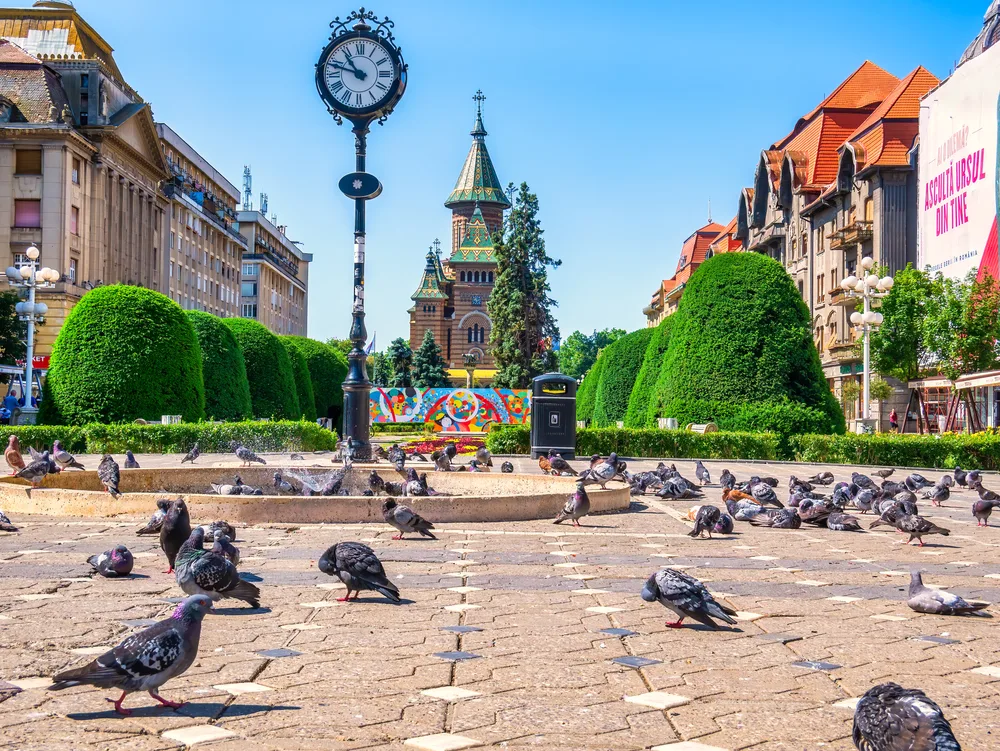
Timisoara, Romania – 06.19.2021: View with Orthodox Metropolitan Cathedral (Catedrala Mitropolitană Ortodoxă) seen from Victory Square, in Timisoara/Cristi
| 👍 Best Time to Visit | June-August |
| 💲 Cheapest Time to Visit | January |
| 🗓️ Least Busy Time to Visit | April-May & September-October |
| 👎 Worst Time to Visit | December-March |
The overall best time to visit Romania is in the summer, from June to August. From exciting mountain ranges to the plethora of cultural festivals and majestic sites, you’ll see that whenever you visit Romania, you’ll have a great time.
So, with so much to see and do and no bad time to visit, what are you waiting for — book your trip today and experience for yourself all that Romania has to offer. Happy travels!



